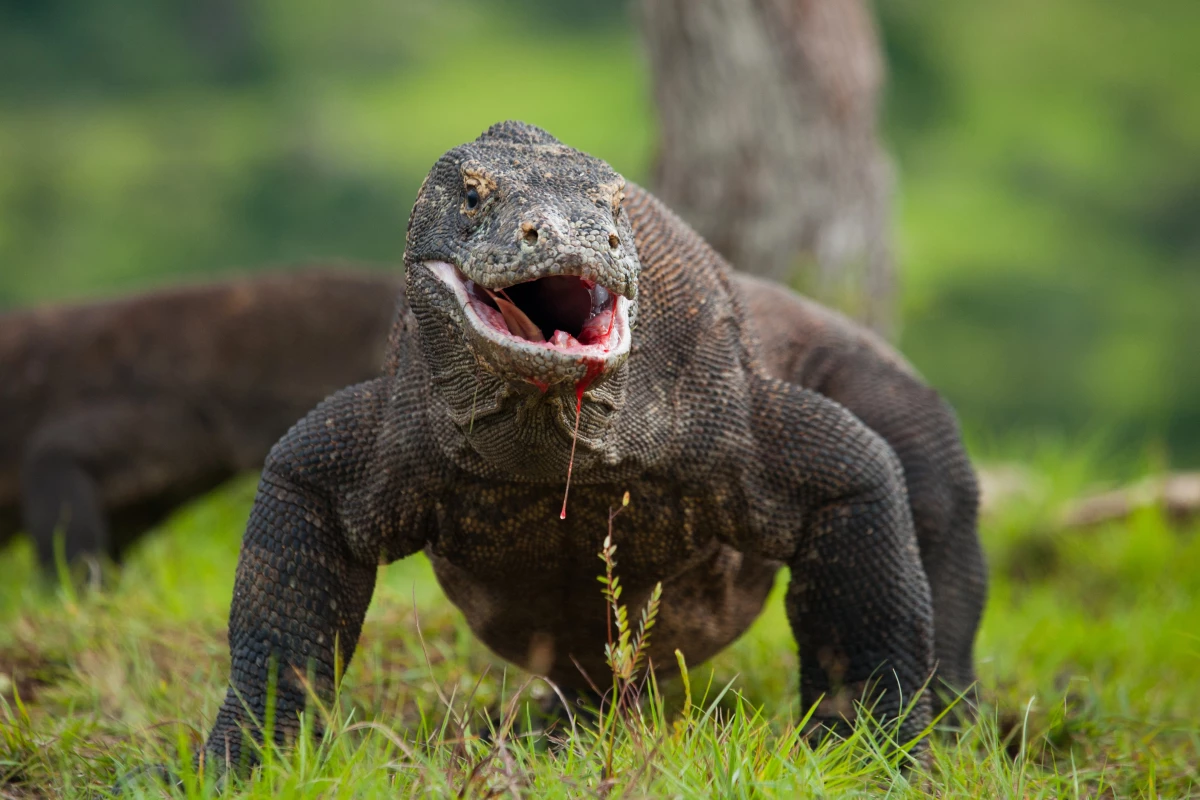As if Komodo dragons didn't seem ferocious enough already, scientists have now discovered that the reptiles tear through flesh using a coating of iron on their teeth. It is now believed that dinosaurs such as Tyrannosaurus rex may have been similarly endowed.
Measuring as much as 3 meters (9.8 ft) in length and tipping the scales at up to 150 kg (330 lb), the Komodo dragon is the largest member of the monitor lizard family, and the world's largest lizard overall. It's native to four Indonesian islands, where it preys on mammals such as wild pigs and water buffalo … plus occasionally even humans.
It was already known that Komodo dragon teeth are similar to those of many carnivorous dinosaurs, in that they're laterally flat, curved back, and serrated along the edges. An international team of scientists, however, has now discovered that the serrations are covered in a hard, sharp coating of iron.

Led by researchers from King's College London, the team made the discovery after analyzing the teeth of Komodo dragon skulls from museum collections, along with the teeth of a Komodo dragon that lived at the London Zoo before passing away at the age of 15.
The scientists additionally learned that other reptiles (including other members of the monitor lizard family) also have some iron distributed throughout their teeth, but in much smaller amounts. By contrast, the iron along the cutting edges of Komodo dragon teeth is actually visible as an orange stain.

Unfortunately, the fossilization process currently makes it impossible to gauge how much iron may have originally been present in the similarly structured teeth of carnivorous dinosaurs like T. rex … for now, at least.
"With further analysis of the Komodo teeth we may be able to find other markers in the iron coating that aren’t changed during fossilization," says the lead scientist, Dr. Aaron LeBlanc of King's College. "With markers like that we would know with certainty whether dinosaurs also had iron-coated teeth and have a greater understanding of these ferocious predators."
A paper on the study – which also involved scientists from Imperial College London, the Zoological Society of London and other institutions – was recently published in the journal Nature Ecology & Evolution.
Source: King's College London






